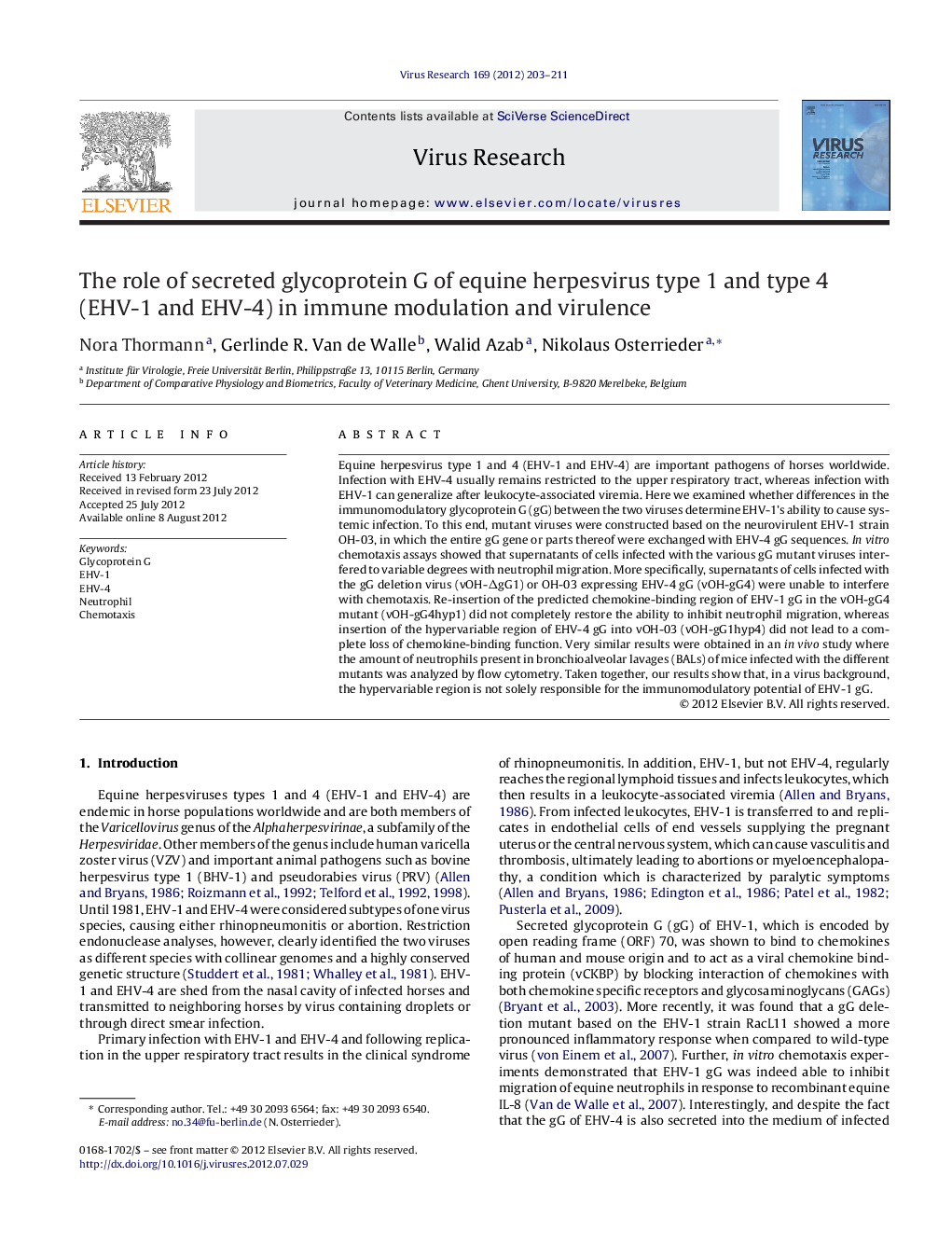| Article ID | Journal | Published Year | Pages | File Type |
|---|---|---|---|---|
| 6143131 | Virus Research | 2012 | 9 Pages |
Equine herpesvirus type 1 and 4 (EHV-1 and EHV-4) are important pathogens of horses worldwide. Infection with EHV-4 usually remains restricted to the upper respiratory tract, whereas infection with EHV-1 can generalize after leukocyte-associated viremia. Here we examined whether differences in the immunomodulatory glycoprotein G (gG) between the two viruses determine EHV-1's ability to cause systemic infection. To this end, mutant viruses were constructed based on the neurovirulent EHV-1 strain OH-03, in which the entire gG gene or parts thereof were exchanged with EHV-4 gG sequences. In vitro chemotaxis assays showed that supernatants of cells infected with the various gG mutant viruses interfered to variable degrees with neutrophil migration. More specifically, supernatants of cells infected with the gG deletion virus (vOH-ÎgG1) or OH-03 expressing EHV-4 gG (vOH-gG4) were unable to interfere with chemotaxis. Re-insertion of the predicted chemokine-binding region of EHV-1 gG in the vOH-gG4 mutant (vOH-gG4hyp1) did not completely restore the ability to inhibit neutrophil migration, whereas insertion of the hypervariable region of EHV-4 gG into vOH-03 (vOH-gG1hyp4) did not lead to a complete loss of chemokine-binding function. Very similar results were obtained in an in vivo study where the amount of neutrophils present in bronchioalveolar lavages (BALs) of mice infected with the different mutants was analyzed by flow cytometry. Taken together, our results show that, in a virus background, the hypervariable region is not solely responsible for the immunomodulatory potential of EHV-1 gG.
⺠Recombinant EHV-1 and EHV-4 with swapped gG's or parts thereof were generated. ⺠Recombinant viruses were used to determine the effect of gG's or the chemokine-binding domain of EHV-1 gG on immune cell trafficking in vitro and in vivo. ⺠EHV-1 gG's ability to interfere with chemokines is mainly, but not solely, dependent on the chemokine-binding region.
